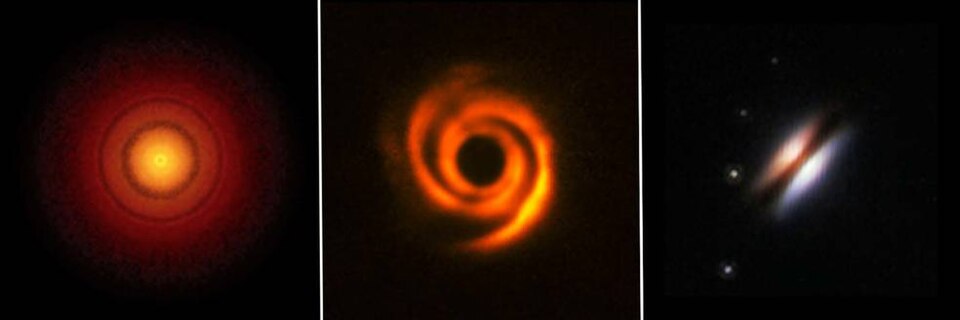Astronomers Capture First Image of Planet Formation Around Star HD 135344B

In a groundbreaking discovery, astronomers have captured what appears to be an image of a planet in the process of formation around the young star HD 135344B, located approximately 440 light-years from Earth in the binary star system HD 135344AB. This unprecedented observation, published in the journal *The Astrophysical Journal Letters* on July 22, 2025, marks a significant milestone in the study of planetary formation, an event that has never been visually documented before.
The formation of planets typically occurs from residual gas and dust surrounding a newly ignited star. While protoplanetary disks have been observed around various stars, the ability to photograph an actual planet forming from this material is a first. The researchers utilized the Enhanced Resolution Imager and Spectrograph (ERIS) at the European Southern Observatory (ESO) in Chile, alongside the Spectro-Polarimetric High-contrast Exoplanet REsearch (SPHERE) instrument, to capture this remarkable image.
Dr. Francesco Maio, a doctoral researcher at the University of Florence and lead author of the study, noted, "We have only one image in only one wavelength. We have three images where we don’t see this object. So we need to understand the properties of these candidate protoplanets." The potential planet is estimated to be twice the size of Jupiter and orbits its host star at a distance comparable to that of Neptune from the Sun.
The implications of this discovery extend beyond mere observation. Hanno Rein, an associate professor at the University of Toronto and an expert in exoplanetary science, commented, "This is an interesting observation. People have been seeing these spiral structures in protoplanetary disks for a long time. What's usually missing is the object that is actually creating those spiral arms. This team here seems to have found one strong candidate of an object that is at the base of one of those spiral arms that might be a planet forming."
The image reveals spiral-like structures in the disk surrounding HD 135344B, which Dr. Maio likened to a cappuccino, stating, "The disk is like a cappuccino. The planet is like a spoon in the cappuccino. And when you move the spoon inside the cappuccino, you start to form spirals." Although previous observations of this star had not detected any orbiting object, the new approach and instruments employed provided fresh insights into the disk's dynamics and the processes leading to planet formation.
Additionally, the binary nature of the HD 135344AB system presents a contrasting scenario; the other star, HD 135344A, possesses no protoplanetary disk, raising significant questions about the factors influencing the evolution of such similar stars in differing environments. Dr. Maio pointed out, "This is very interesting, scientifically speaking, because we don’t know why two very similar stars evolved together as two different systems."
As the field of exoplanetary research continues to evolve, this finding opens new avenues for understanding planetary formation and the conditions necessary for such processes. Future research will likely involve using additional wavelengths to gather more data on the object captured in this image and further clarify the characteristics of potential protoplanets within the disk.
This discovery not only advances scientific knowledge but also inspires curiosity about the complexities of our universe, reinforcing the importance of continued investment in astronomical research and technology development.
Advertisement
Tags
Advertisement





